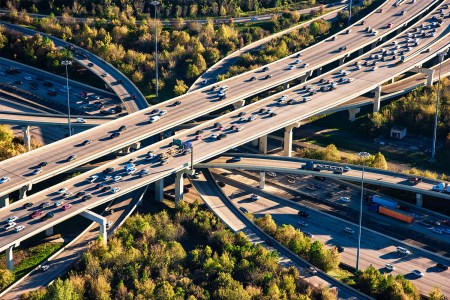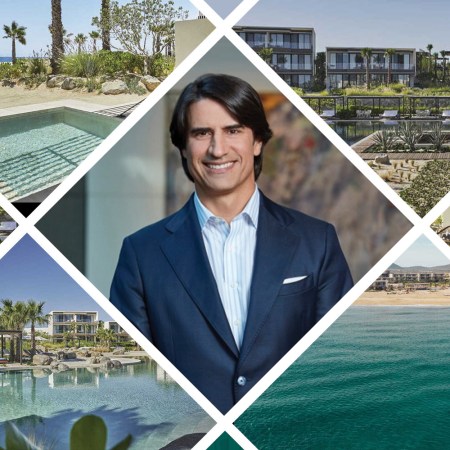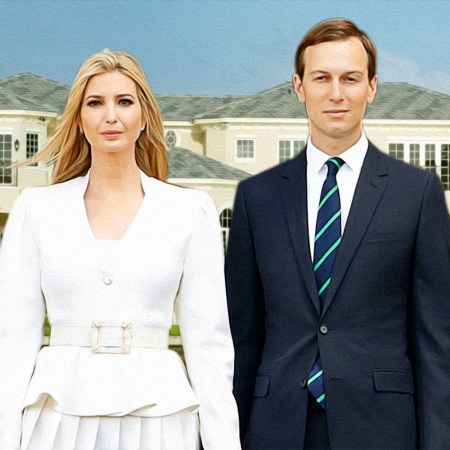When international companies grow in size and coalesce their power, they can sometimes require more physical space to organize and operate than their host municipalities can offer. Rather than wait for cities to make real estate and resources available, some of these powerful corporations build their own cities: complete, self-contained and company-sustained communities.
Depending on where the mega-firms in question choose to make their footprint and how they go about it, these corporate cities can benefit a region or fray the fabric of its identity. Two projects on opposite sides of the world demonstrate that dichotomy as one flourishes and the other languishes in legal turmoil.
If you venture to India’s new Billionaire Row just outside Delhi, you’ll discover the fastest-growing enclave of focused wealth ever found in the world’s most populous country. Multi-million dollar high-rise residences bloom next to private clubs, art galleries, Michelin-starred restaurants and members-only nightclubs.
It’s all made possible by India’s rarest of municipalities: a corporate-built city serving as an anchor for economic growth and luxury living. DLF Cyber City, built by and named after the country’s most successful commercial real-estate developer, combines accommodations and services for both high-end buyers and average consumers while providing jobs for thousands of locals. Its existence asks if a similar regional entity can exist amidst America’s mix of rural and urban sensibilities.
More than 12 time zones away in California, just east of Silicon Valley and south of the East Bay, developers and billionaires are looking to answer that challenge with their own vision for utopia. Organized under the banner of Flannery Associates and promoting their effort as “California Forever,” a group of elite investors have gathered to fund, promote and plan a brand new city. Those investors, according to news reports, include Marc Andreessen, software developer; entrepreneurs Patrick and John Collison; Laurene Powell Jobs, widow of the late Steve Jobs and founder of Emerson Collective; Reid Hoffman, LinkedIn co-founder; venture capitalist Michael Moritz; and Jan Sramek, former trader for Goldman Sachs.
The Mass Delusion of Driving
Behind the wheel, we’re overconfident, inattentive and over-reliant on tech. According to those who study driver behavior, instead of solving these problems, we’re making them worse.If all goes as the investors plan, after spending about $900 million to buy up about 60,000 acres of land in an agricultural community of Solano County, CA, per The New York Times, the company will build an ultra-green super city driven by modern technology and based on the progressive environmental goals of sustainability and collective mobility via public transportation, bikes and electric vehicles.
Many farmers and other landowners were eager to take the money in the perfectly legal transactions, but other residents and local government officials oppose the creation of a hyper-modern metropolis that promises to forever alter the identity of the region. The developers and some of the locals find themselves in an ongoing legal battle, with the developers holding fast to their vision and a subset of residents looking to resist at every turn until the billionaires quit.
The world’s observers are faced with two visions for corporate cities in separate countries with different cultures. While one is welcomed and celebrated by its host country, the other has devolved into a raging legal battle.

Designed by Business, for Business
From its outset, DLF Cyber City was created to generate business, draw established firms to its friendly confines, and serve its employees and executives. The company behind its construction is one of the few in that part of the world with the resources and influence to push such a project over the line.
Founded in 1946 in the wake of global conflict, New Delhi’s DLF (which stands for Delhi Land and Finance) develops commercial, residential, hospitality, resort, luxury and mixed-use properties, with its oldest efforts dating back to 1949. The company employs more than 1,600 people, while reporting more than $750 million in revenue in 2022-23 and more than $6 billion in overall assets as of 2022.
Though DLF established its original headquarters in Delhi, the company searched for an undeveloped area for further growth in the early 2000s. All eyes landed on Gurgaon, a zone of arid farmland a little more than 18 miles from the company’s original home. By 2003, DLF Cyber City opened and immediately welcomed office installations from more than 500 companies, including many of the world’s top technology-focused entities, including IBM, Ericsson, BMW India and Nokia.
Originally set up as a large office park, the area has grown into its own municipality over the last 20 years. Now home to more than one million residents and workers, DLF Cyber City hosts more than 25 shopping malls, popular international restaurants, nightclubs and luxury outposts of brands like Bulgari, Chanel and Louis Vuitton.
As Sreeya Bhattacharya, assistant manager of corporate communications and marketing for DLF Limited, explains, the company has two other main projects in the region, DLF Cyberpark and DLF Downtown. The former is a mixed-use business site housing corporate offices and their employees. Downtown is a retail and recreation area featuring international brands and entertainment venues such as nightclubs and theaters.
“DLF Cyberpark hosts many of the world’s major businesses,” Bhattacharya says. “It is a technologically advanced office ecosystem that offers a mix of office, retail, and sustainable, safe residential use.”
A 12-acre complex about six miles from Indira Gandhi International Airport, Cyberpark is a 2.5-million-square-foot project with interconnected blocks, each offering an independent identity.
Meanwhile, Bhattacharya says Downtown offers a total development potential of 11 million square feet within a 36-acre campus. The area includes office, retail and recreation facilities, all in a region battling some of the most severe poverty in the world.

Star of India: The Camellias
With Cyber City acting as an anchor, the luxury arm of DLF capitalized on the tech money flowing into the area and established its stretch of Gurgaon into one of the world’s fastest growing “Billionaire Rows.” The gem of the company’s ongoing residential developments is a sprawling luxury community called the Camellias: a residential high-rise complex of nine towers, which include one of the biggest clubhouses of its kind in the world.
“We wanted The Camellias to be the absolute best example of uncompromising luxury, from its architecture and facilities to its cuisine and its staff,” says Aakash Ohri, managing director and chief business officer for DLF Home Developers. “We sought out the best minds in their industries to work on its design and creation.”
Ohri stresses that those creative minds came from around the world. The property’s clubhouse project team was led by Shawn Sullivan, partner and studio leader at the Rockwell Group of New York City. Arnold Chan of Isometrix Lighting and Design from London created the illumination plan. Jay Wright, CEO of the Wright Fit, developed the fitness center. Ingo Schweder, founder and CEO of GOCO Hospitality, oversaw the spa. Finally, Gerdo Aquino, co-CEO of the SWA Group, a landscape architecture firm, worked on the look of the grounds — including the meditation garden and a nearby nature walk planted with unique Indian flora and fauna.
Bhattacharya confirms, though it’s still adding services and amenities, the Camellias is a success amongst India’s affluent crowd, with home prices starting around $6.5 million USD and running north toward $13 million for the most prestigious or penthouse units. One 11,000-square-foot apartment was recently sold in the secondary market for $13.7 million.
“Less than 20 units remain out of our total 429, with 50% already occupied,” she says. “The remaining sold units are under construction, as The Camellias apartments are sold as bare shells. Owners typically take 18-24 months to build the apartments according to their specific requirements and design philosophy.”
“That concept of ‘luxury’ and ‘bespoke’ is ever-evolving, and The Camellias is an important expression of that,” Ohri insists.
Meanwhile, the wealthy residents calling the elite development home bring their money with them when they shop or recreate.
Despite multiple attempts to gather the reactions of national, regional and local officials to the development and gradual expansion of DLF City and its more luxurious additions, no response was received.

Corporate Cities Come to the U.S.
Major corporations building massive company complexes is not a new phenomenon in the U.S. Whether it’s the Apple HQ in Cupertino, CA, or Nike’s compound in Beaverton, OR, major industrial players often construct home bases that are larger than most American small towns, though not complete municipalities in their own right. To date, the best examples of Lower 48 cities built largely by a private company are Ford Motor Company’s home in Dearborn, MI and the ever-growing Disney presence in and around Orlando, FL.
Still, cities in the likeness of DLF’s creation are a newer concept to U.S. industries, residents and their elected officials. The latest such creation is in its very early stages on the outskirts of Fairfield, CA. The town’s mayor, Catherine Moy (a native of Solano County where the drama is playing out) is watching Flannery Associates’ group of tech billionaires accumulate agricultural property. She’s leading the protests from local residents looking to avoid major construction in their quiet backyards.
“My interest in this started as far back as five years ago when I got a call from a farmer,” Moy says. “He knew me as a reporter for 20 years, and he wanted me to know somebody was buying up land out here. I started looking into it with public records searches and found out it was more than 20,000 acres at the time. The group is incorporated in Delaware where it was legally difficult to learn who was behind [the land grab].”
It took a story by The New York Times to blow the whistle and draw nationwide attention to the California Forever effort. Once the names and intentions were out in the open, Moy says that local residents began voicing their concerns on what the proposed city would do to their deliberately quiet lifestyles.
“We are an agriculture-based area here, and California grants us a Right to Farm,” she explains. “We also have had the Orderly Growth Initiative in place in Solano County since 1984. It was voted in by the community.”
A reading of the initiative makes it clear the county restricts urban growth to its seven cities, protects farmlands for a strong agricultural economy, and preserves natural lands.
Moy insists the California Forever effort will disrupt a farming-first identity the county has enjoyed for more than 150 years.
“Our group is called Solano Together, and we are the main organization pushing against this development in a full-out campaign,” Moy adds. “We have a referendum on the ballot in November to let the people here decide if they want to change [the Orderly Growth Initiative].”

California Forever on the Defensive
While Moy and her supporters fight tooth and claw to stop the billionaires’ bid for their version of utopia, representatives of both Flannery Associates and its California Forever program insist their futuristic community will benefit its local surroundings and California as a whole.
According to Gabriel Metcalf, California Forever’s head of planning, their new community looks to build off of the long-standing goals of sustainable urban living and cities that no longer rely on individual automobiles.
“We are building a walkable, sustainable community to restore the California Dream by bringing middle-class homes, good-paying local jobs and clean energy to Solano County,” Metcalf says.
He stresses that the California Forever project will reduce the region’s VMT (vehicle miles traveled) by bringing jobs to Solano County. Their research indicates, when compared to other Northern California residents, that Solano County denizens travel on average the farthest away from their homes in the Bay Area to go to work.
“Our cutting-edge city looks to change that by centralizing communal residences (often not single-family homes), employment opportunities, non-internal-combustion-engine public transportation, bike lanes and shopping necessities all within a single urban shell,” he adds. “There are other serious significant infrastructure challenges in the region, and we hope to be a part of the solutions.”
As an example, Metcalf highlights California Highway 12 between Sacramento and Stockton. Referred to by so many local residents as “Blood Alley,” the stretch of road from Lodi to Rio Vista has claimed dozens of lives over the years. Metcalf reports the California Forever initiative would help fund projects to “improve the highway and make it safer.”
When asked about how California Forever plans to deal with the opposition from nearby towns, farmers and small business, Metcalf demurs and instead changes the focus to those locals who instead support their ideas.
“We’re receiving significant support from nearby towns, businesses and farmers,” Metcalf claims. “In addition, we have updated our initiative twice in response to feedback from local stakeholders — both times meeting the stakeholders’ concerns.”
Part of that support was shown earlier this week, when California Forever submitted over 20,000 voter signatures to the Solano County registrar which, if validated, would put a ballot measure before voters in November “seeking to amend zoning codes to allow the residential project to be built on agricultural land,” per the LA Times.
Finally, Metcalf points to California’s statewide housing crisis to highlight the value of the planned super city.
“Our project will significantly add to the region’s housing supply and help Solano County’s residents and their children stay in Solano by both building homes families can afford and by bringing better paying jobs to Solano County,” he says.
Over in Fairfield, Moy isn’t buying it. She promises the people she represents will be patient and will continue to fight Flannery Associates and California Forever step by step in public hearings, in the courts and via elections against opposition with extremely deep pockets.
“Do we think it’s going to be easy to stop them altogether?” Moy asks. “No. But we have to stop this, so the plan is to keep pushing on them. Just keep pushing on them until they get tired of it. I believe some of them will because even billionaires don’t like bleeding endless money with no sign of a return.”
This article was featured in the InsideHook newsletter. Sign up now.

























